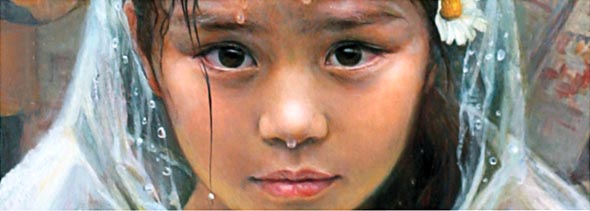CORRECTION: A previous version of this article incorrectly defined the word “falun.” The word means “the wheel of law.” Also, the exhibit does not have sculptures, only paintings.
For many, punishment and persecution are not the immediate reactions to a spiritual practice focused on self-improvement through meditation and simple exercise. But for followers of the ancient Chinese spiritual practice Falun Gong, this is a harsh reality.
Founded in 1992, Falun Gong, also known as Falun Dafa, quickly grew in popularity, but would eventually face antagonism from the Chinese government. In order to educate people on Falun Gong and the persecution, the Kerckhoff Art Gallery will be hosting a new art exhibit, titled “The Art of Truth, Compassion, Tolerance,” including the works of more than 12 artists.
“Falun means “˜the wheel of law’ and gong means “˜practice,'” said Tiling Chao, one of the event coordinators and a UCLA alumnus. “People feel the benefit of the practice, and that’s why it became extremely popular in China.”
For many practitioners of Falun Gong, the discipline offers both mental and physical purity, as well as a spiritual dimension.
“The values … were very clear and seemed to me to be increasingly true, that this is the very essence of what it is to be good,” said Ben Bendig, a graduate student in psychology and president of the UCLA Falun Dafa club.
According to Bendig, by 1998, estimates put the number of practitioners at 70 million people, drawing the attention of the Chinese government, which would respond with negative propaganda and persecution in 1999. At the height of persecution, the Chinese government funneled a fourth of its gross domestic product into stopping the practice of Falun Gong.
The exhibit houses various traditional oil and Chinese watercolor paintings. It is, in part, a response to the persecution of Falun Gong followers, and has toured 40 countries worldwide and is here at UCLA for the second time. The exhibit first appeared at Kerckhoff Art Gallery in 2005.
“You know, a picture paints a thousand words. Mankind has always expressed their thoughts, feelings, emotions, beliefs through paintings,” Chao said.
For many, the use of art to spread awareness about Falun Gong and its current turmoil is preferable to other forms of protest.
“I think it’s a very peaceful, artistic and powerful way to get messages across. Of course, we could go out and protest, or make some noises, and gather 10,000 people … or you can do it through art,” said Chang Yi, an organizer of the event. “I think when art is done right, it really touches someone’s soul. I think that the emotion and energy that can reach people is just incredible.”
While many involved in the event are invested as practitioners of Falun Gong themselves, others have been touched directly by the history of Falun Gong, with friends and family currently under arrest by the Chinese government. In part, the exhibit hopes to spread awareness about both the practice and the current state of affairs in its native China.
“To me, persecution is always a very vague thing, you don’t really understand it. I was brought up in a free world, and I didn’t really understand it until what happened to my family,” Yi said, whose mother and sister are currently being held in prison by the Chinese government.
Still, the tenets of Falun Gong endure. Along with the peaceful art exhibit, others are still finding different ways to make their voices heard. Yi is launching a postcard campaign, asking for volunteers to send postcards to his mother and sister in hopes to pressure the government while providing comfort for his family.
Chao, too, hopes a positive message continues to come across.
“Falun Gong is really a wonderful, beautiful practice. I really, really hope the community at UCLA can come to the exhibit and bring back something beautiful about Falun Gong,” Chao said. “I want people to know there’s hope in the world.”
